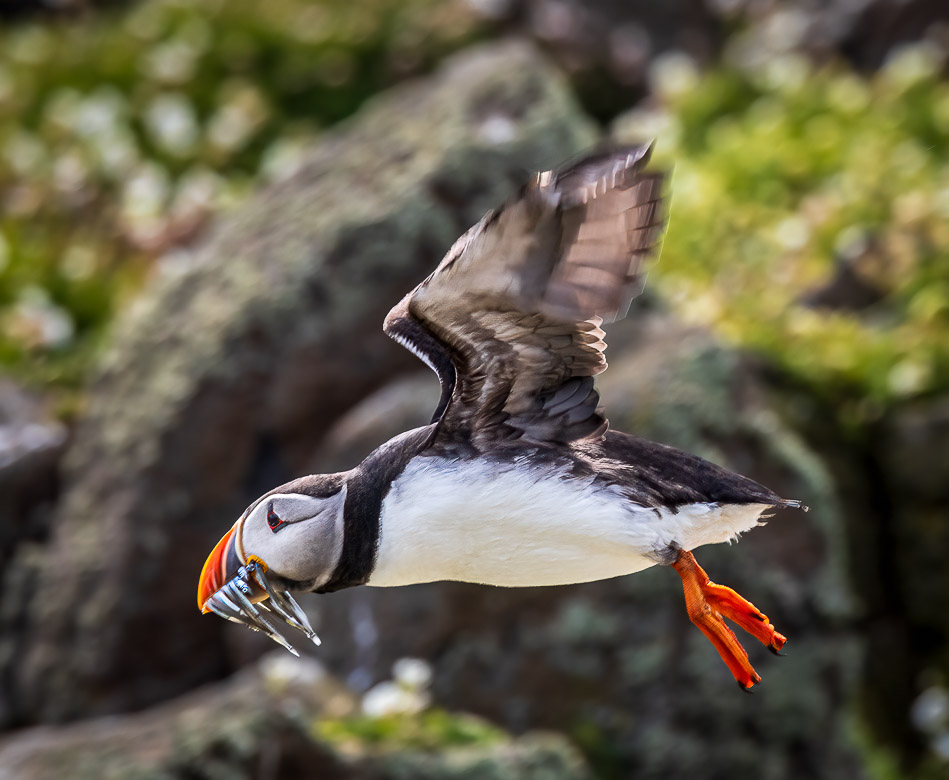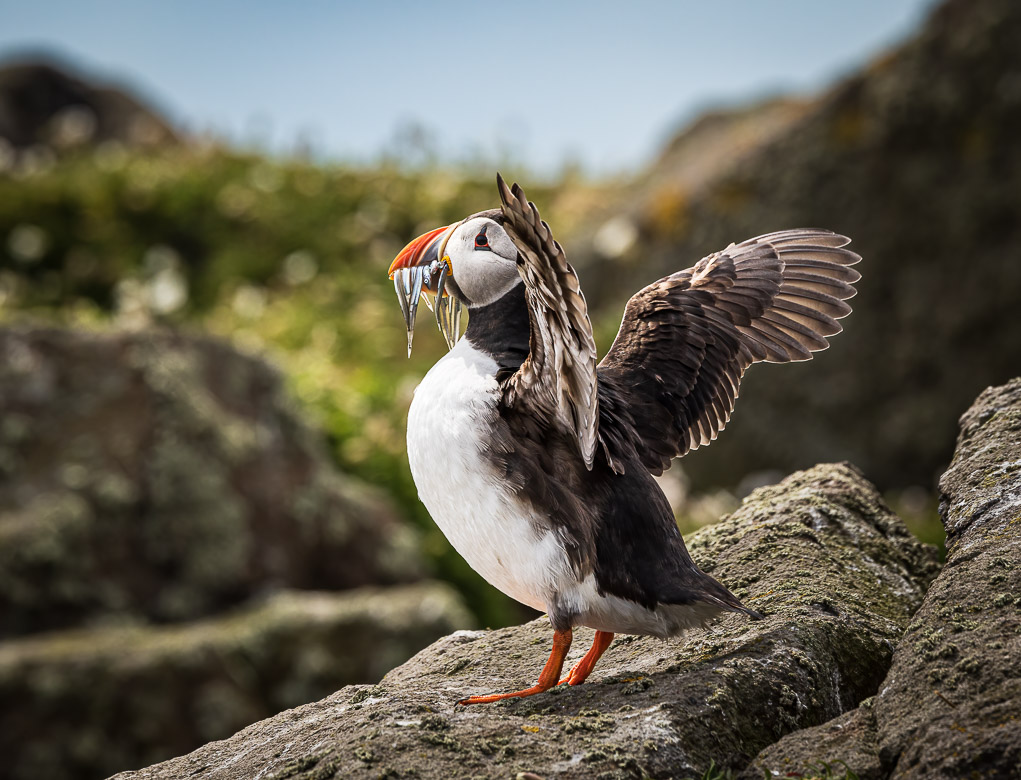
Outside of the East Neuk fishing villages guarding the entrance of the Firth of Forth is the Isle of May. It is around 1.5 km long and 0,5 km wide mainly oriented from north to south. The east coast is low lying and provides a little harbour, where we landed with our RIB – a fast and bumpy inflatable boat that took about ten of us from Anstruther harbour out for a day tour to and on the island.
The west coast, on the other hand is dominated by high cliffs, where thousands of breeding kittiwakes, razorbills, guillemots and shags have found their nests on the tiny shelves of the cliffs. Out at sea the seals are playing in the water or basking in the sun on the tiny rocks. And up on land behind the cliffs the puffin colony has found their homes in burrows in the ground.
Due to its importance for wildlife the island is protected by both European and national legislation. As many of you know, I enjoy my landscape photography. But fast-moving wildlife is an entirely different thing and I struggled to catch them in flight and didn’t always have the shutter speed fast enough or succeed in. panning the camera to follow them in flight.
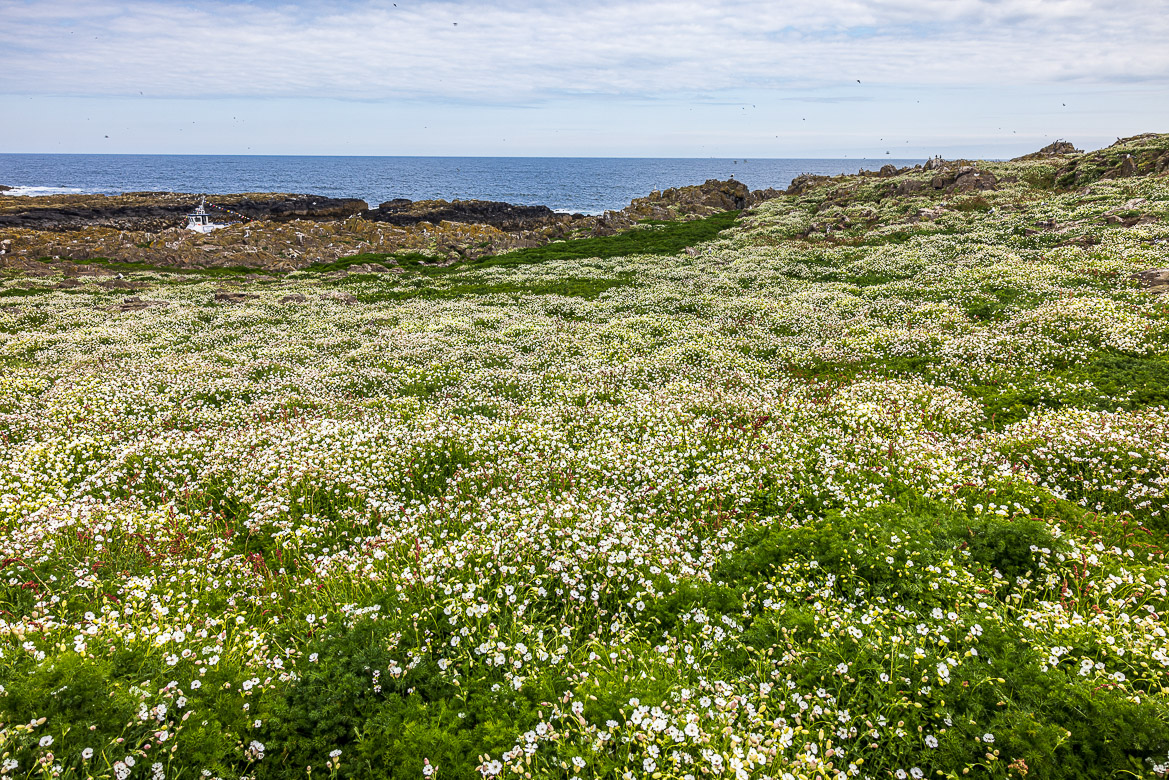
St Adrian
We know that the island was inhabited since at least the fifth century AD. One of those inhabitants were Adrian. He may have been Irish or from continental Europe, but settled in Scotland. He may (the reason for the many “mays” is that there is very little clear evidence of anything related to St Adrian – maybe because we talk about the Isle of May?) have been bishop of St Andrews, but was drawn to remote locations and established a series of monasteries and hermitage along the coast of Fife and also on the Isle of May.
Adrian moved to the Isle of May, probably because its very remote location attracted him or maybe because it offered better protection from marauding Vikings. Anyhow, in 875 he was slaughtered by Danish Vikings together with all inhabitants of the monastery. As the story goes, six thousand six hundred people were killed. However, that is not a very plausible figure. There is no evidence whatsoever of more than a few buildings on the island, and I would say a more probably figure is maybe a dozen monks were living on the island.
At the same time Vikings also attacked several villages along the Firth of Forth, see my post about St Monan’s.
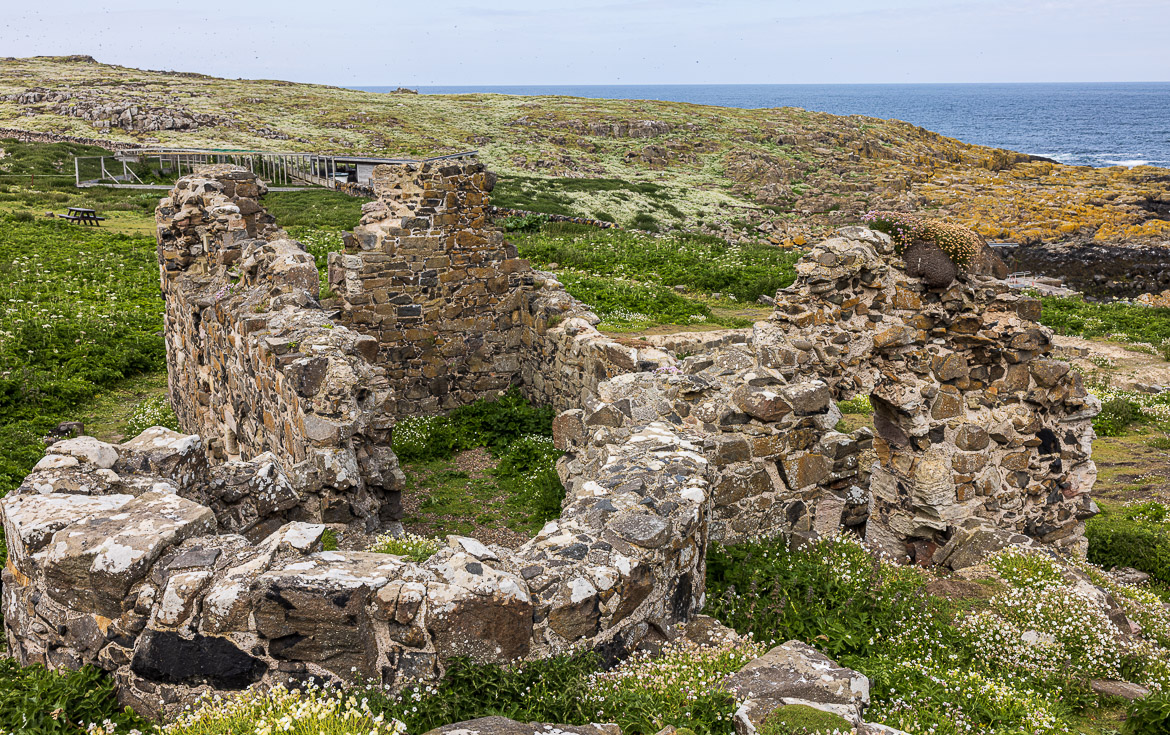
After this event the island was uninhabited for a period, but in 1145 King David I of Scotland established a new monastery there dedicated to St Mary the Virgin with a shrine to St Adrian. Records from that time indicate that between 9 to 13 monks were resident at any one time. It must have been a very desolate place and in the 14thcentury the monks relocated from Isle of May to Pittenweem. A solitary hermit was left on the isle to tend to St Adrian’s shrine.
Lighthouse
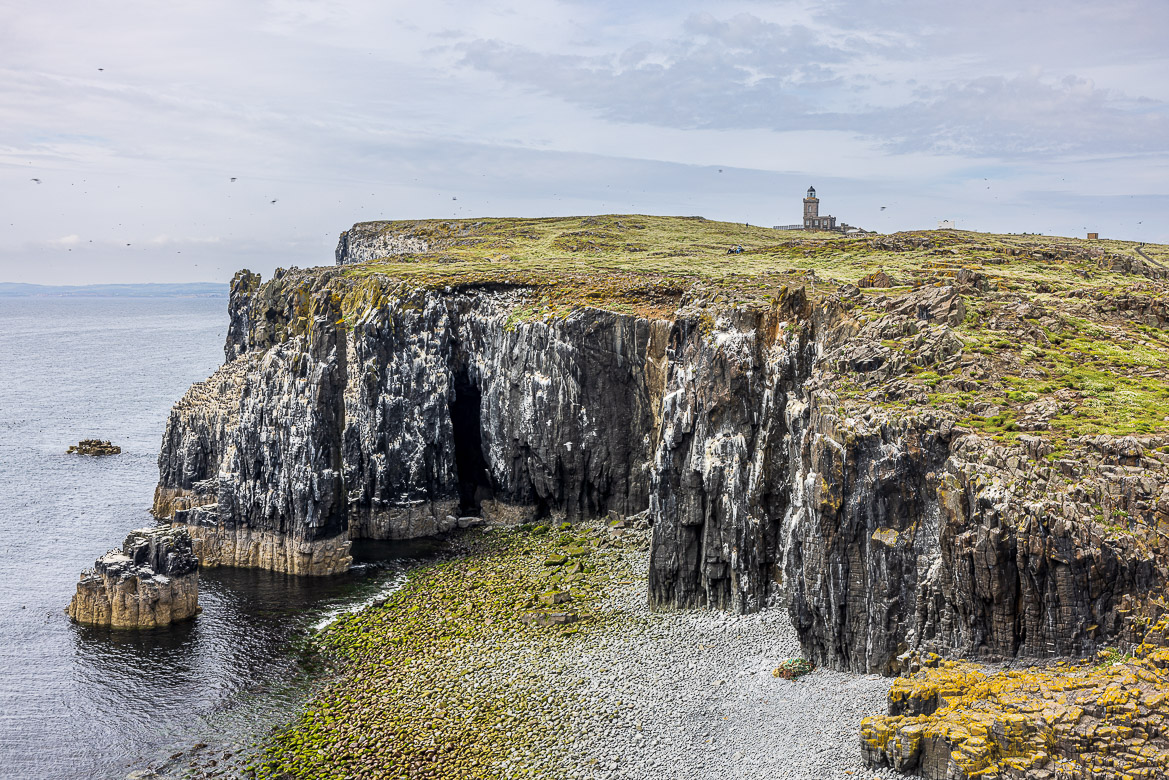
A lighthouse has been operating in the Isle of May since 1635. It was a coal fire on top of a stone structure. Coal was hoisted up to the burning fire and three men was employed all year around to look after the fire, which consumed 400 tons of coal each year! A new lighthouse was erected in 1816 with accommodation for three families to look after it. It consisted of an oil lamp with parabolic reflectors. The lighthouse is still standing and can be seen far away in one of my photos.
The lighthouse is standing on the west taller side of the island. The cliffs on the west side of the island near the lighthouse are full of nesting birds on the ledges of the cliffs.
Guillemots
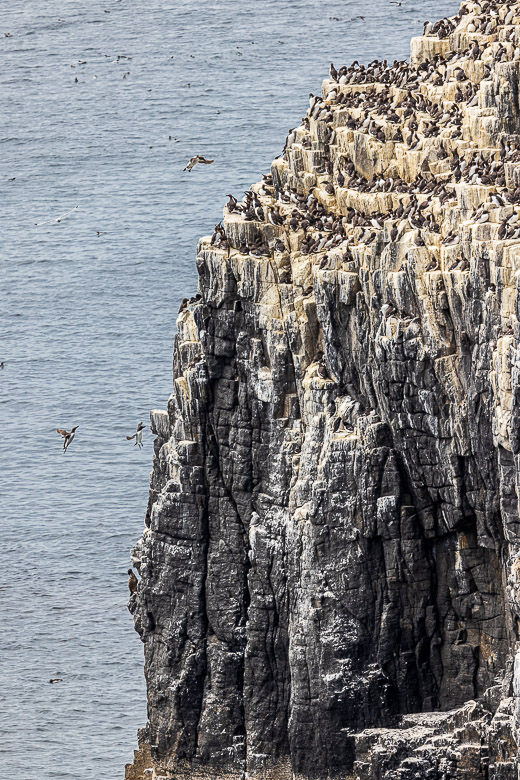
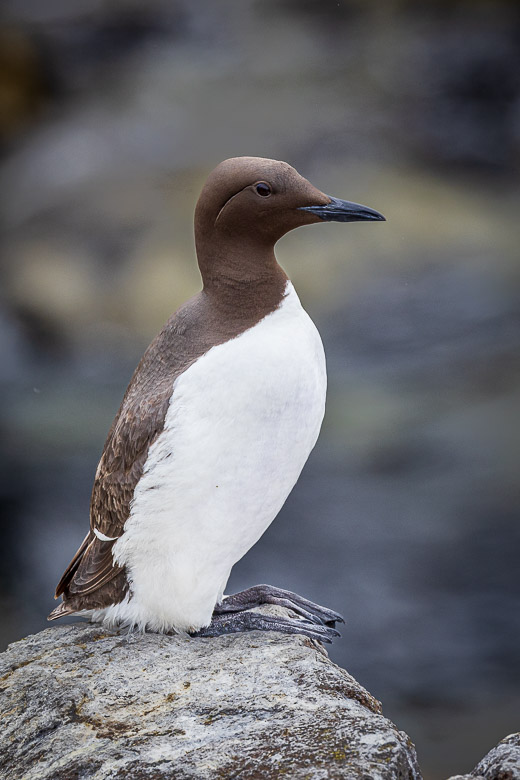
Look at the photo above with the lighthouse. The same cliffs that are on the left in that photo are showed in the left photo immediately above here, but with a ten times larger zoom. The rock ledges are full of nesting guillemots, and you can see a few coming in to land on the ledges. Over 20,000 guillemots can be found on the Isle of May in the breeding season. Each pair lay an individual egg directly on the rock. No nest is made. They have a very small territory, only about one beak-length around the space they occupy. A guillemot is shown in the photo to the right above here.
The egg is conical, and one theory why it is shaped like this is that it could roll the cliff sides if it was round. Now, it will just rotate around a centre point. When the chick is around 3 weeks old, it dives off the cliff together with its father (that first dive must be a scary experience, although it is done with dad). The father will look after the chick in the sea until it can look after itself.
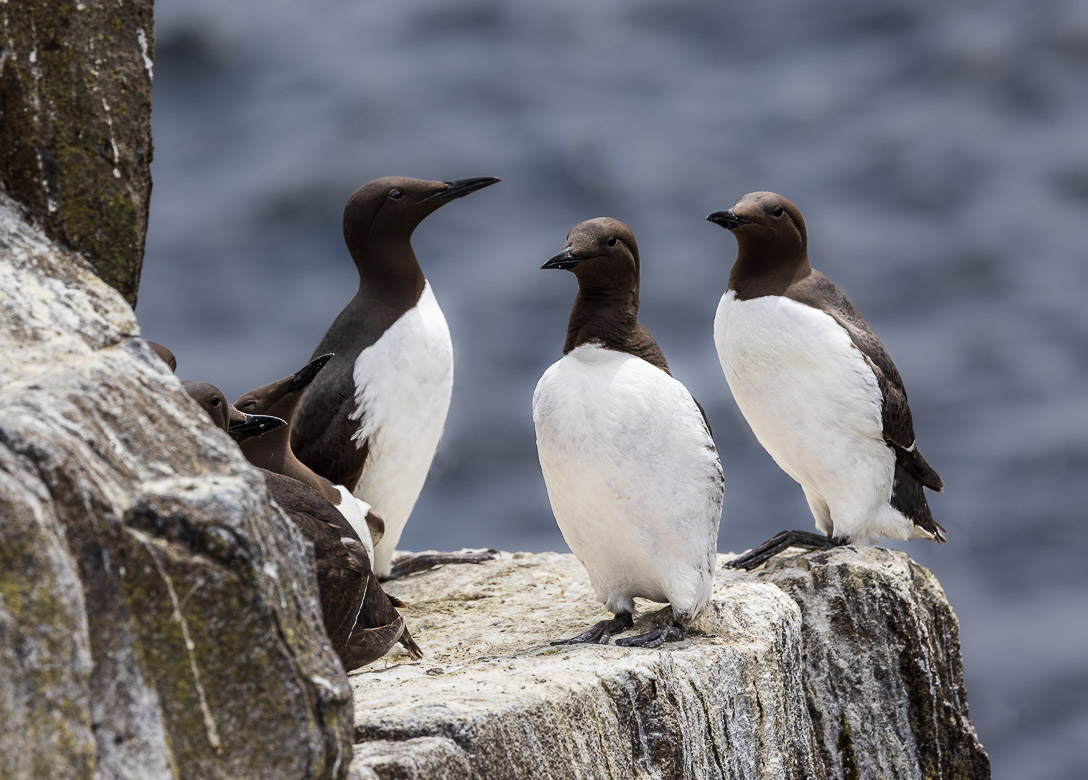
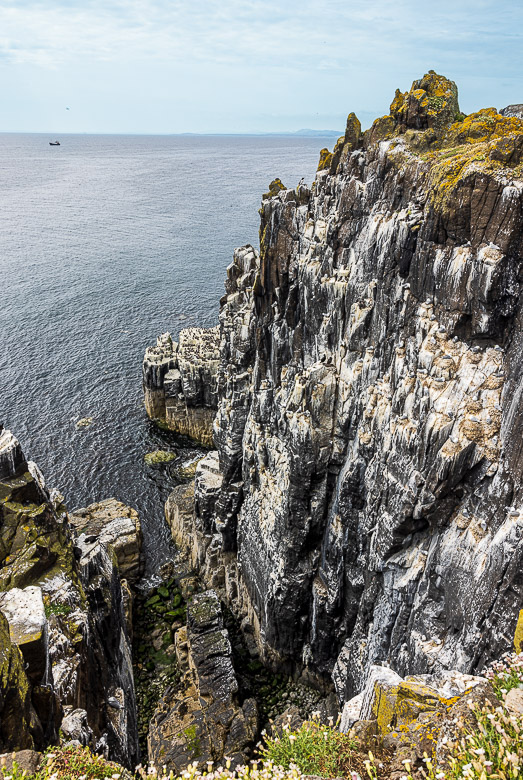
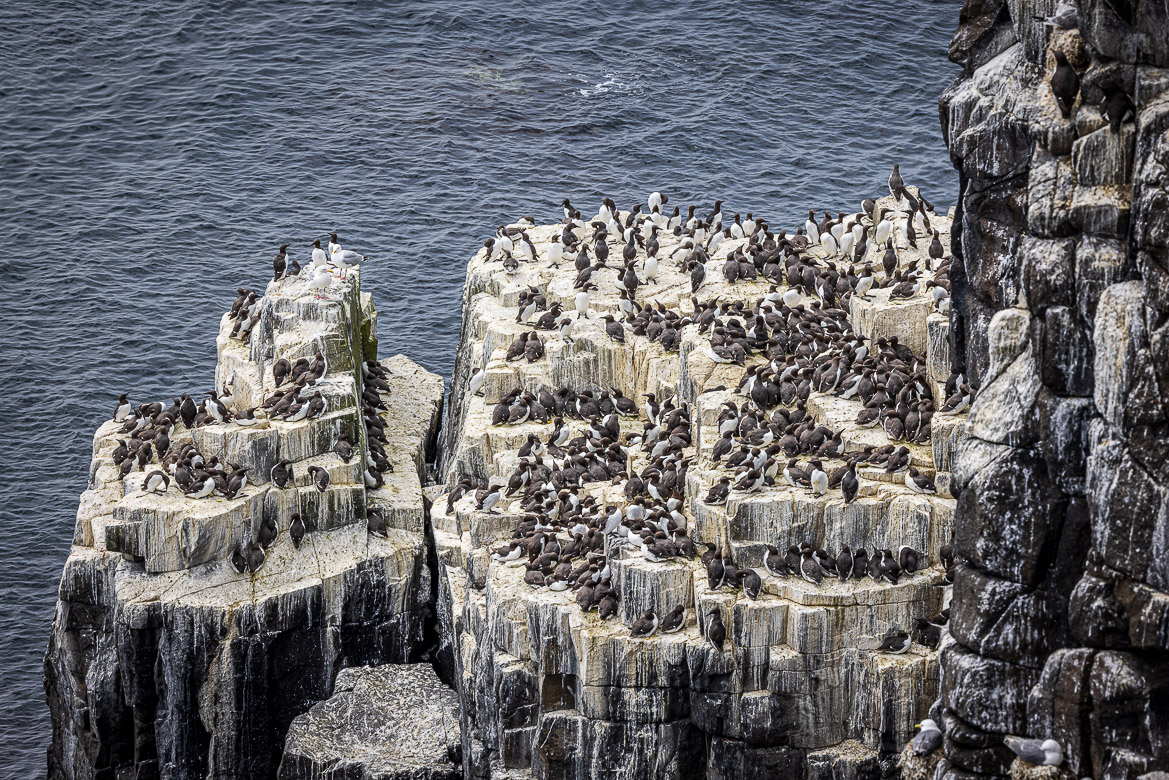
Razorbills
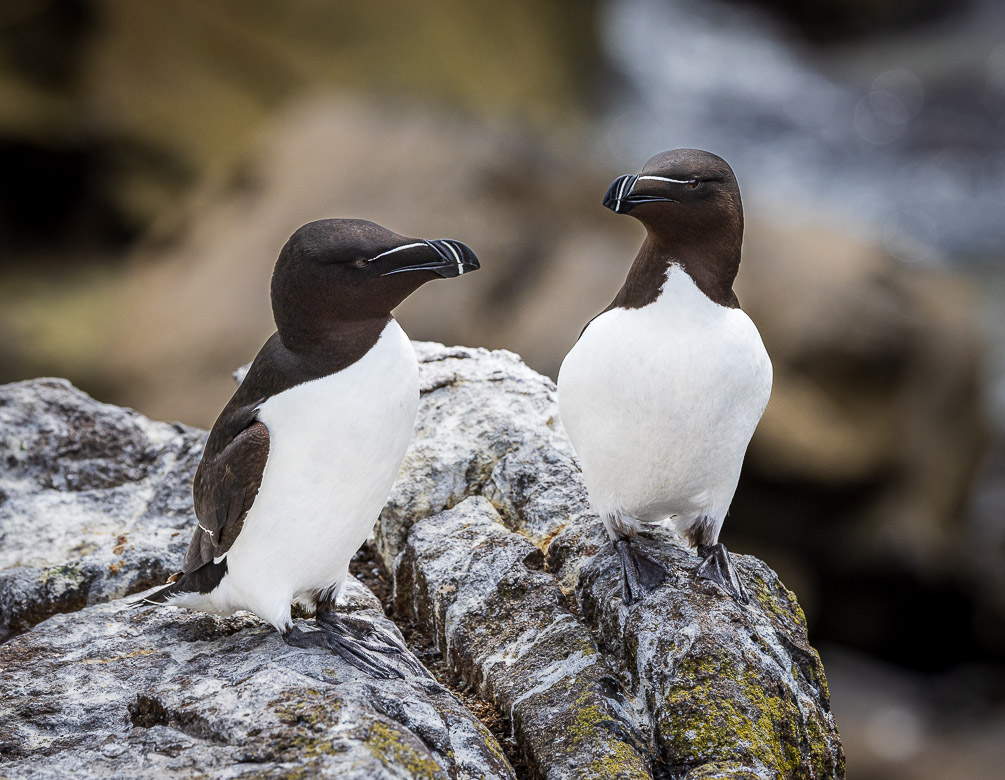
Razorbills are closely related to Guillemots. Both belong to the auk family Both lay one individual egg directly on the rock without building any nest. But razorbills prefer narrow ledges, crevices, and corners of ledges, which are less exposed.
Females select their mate and once a male partner is chosen the pair will stay together for life. The pair will mate up to 80 times in a 30 day season to ensure fertilisation. See my photo below of the mating razorbills.
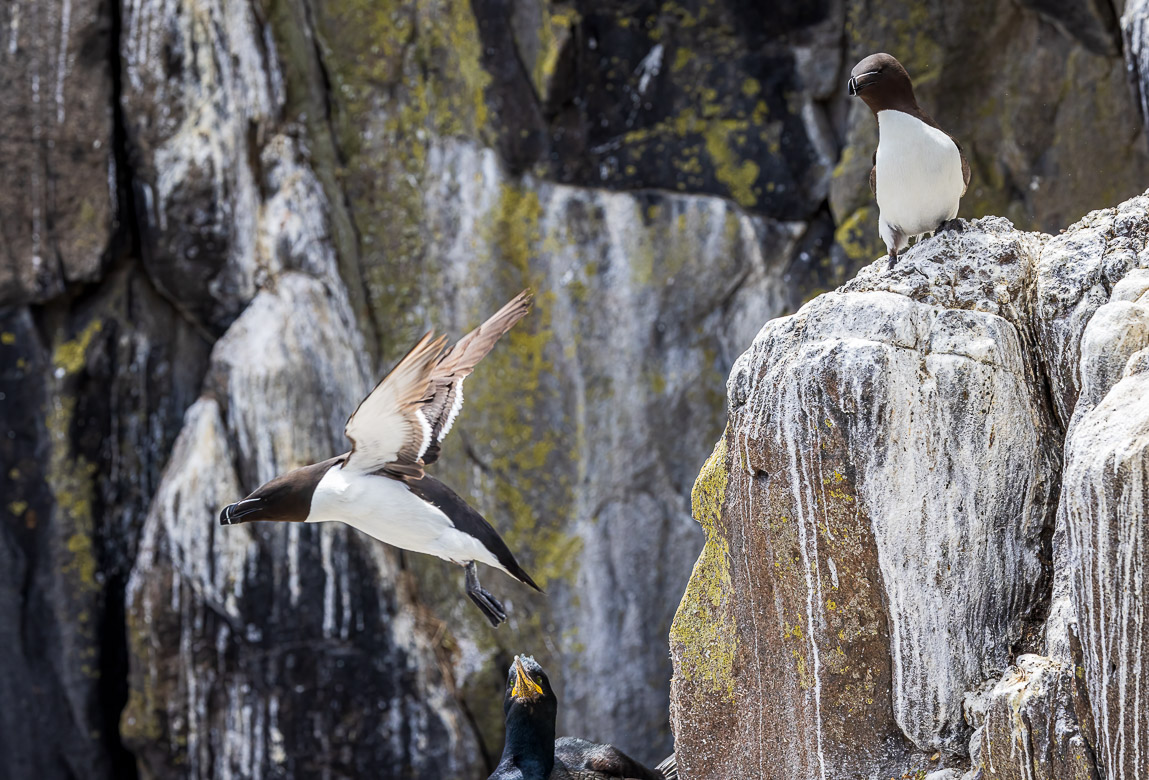
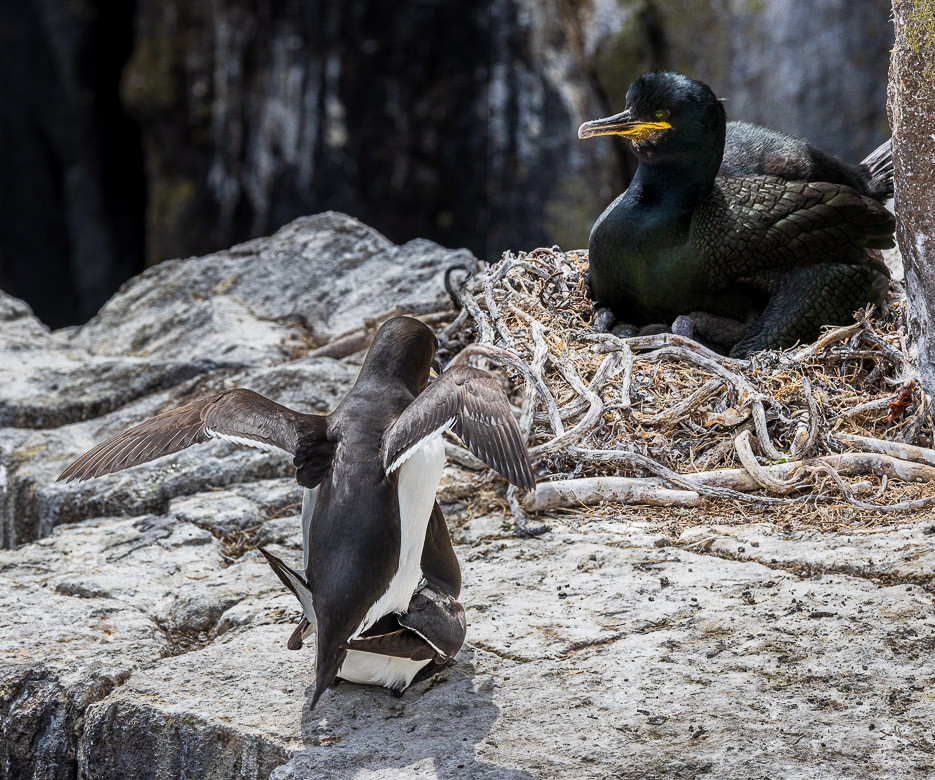
Kittiwakes
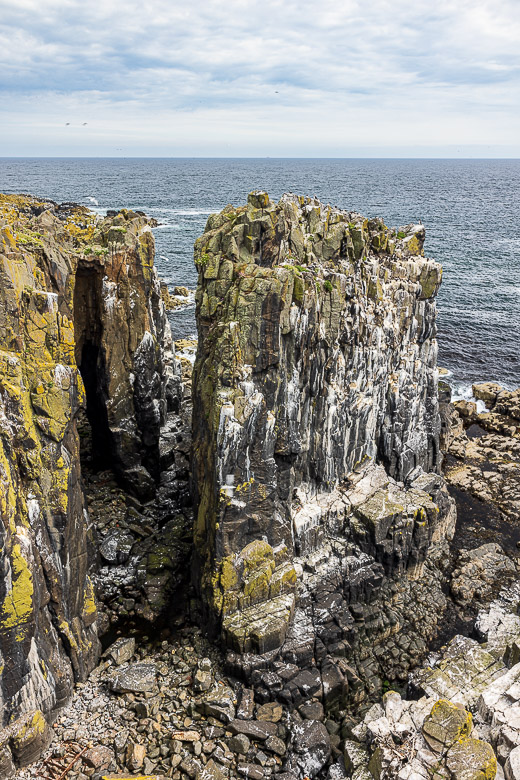
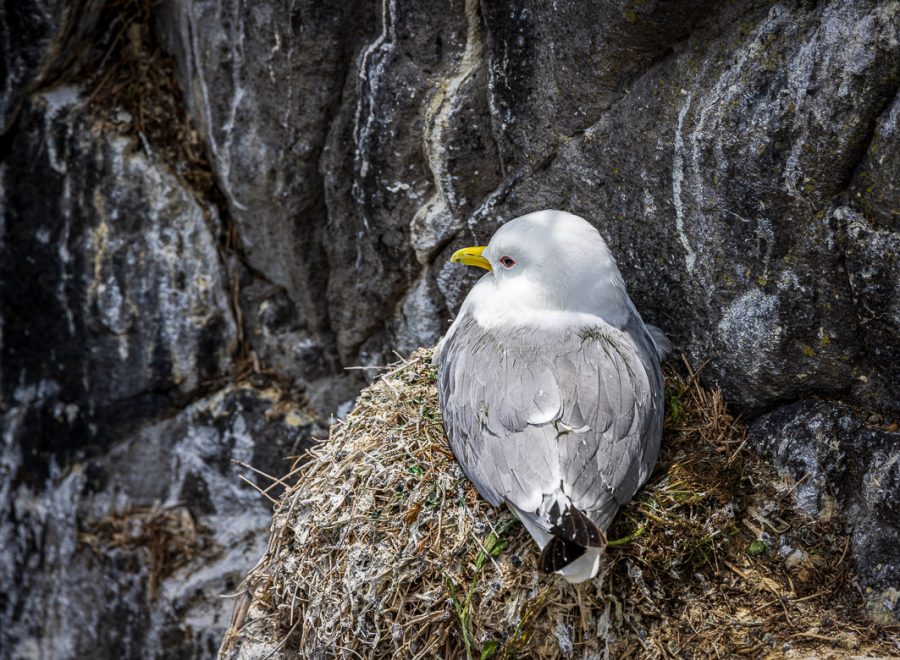
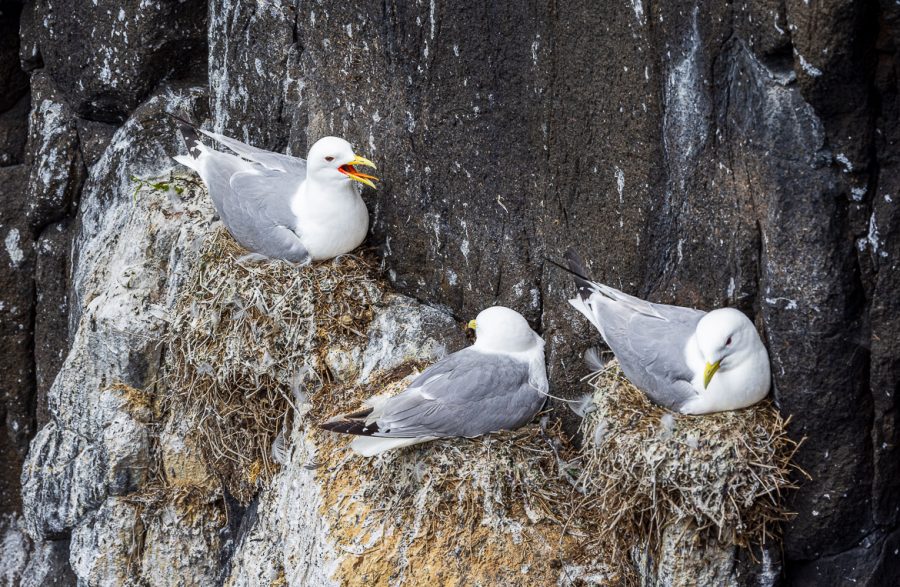
Kittiwakes are the most numerous type of gull. They spend the winters in the Atlantic and come back for the breeding season. They get their name from their calls – “kittee-wa-aake”. They don’t scavenge at landfill sites like other gulls. They nest in colonies on rock ledges and can be found all around the coast of Great Britain, where there are rocks and cliffs suitable for making nests. The chicks know instinctively how to stay still, so they don’t fall of from the narrow cliff shelves. Notice that the kittiwakes build small nests, whereas the guillemots and razorbills lay their eggs directly on the rock without any nest at all.
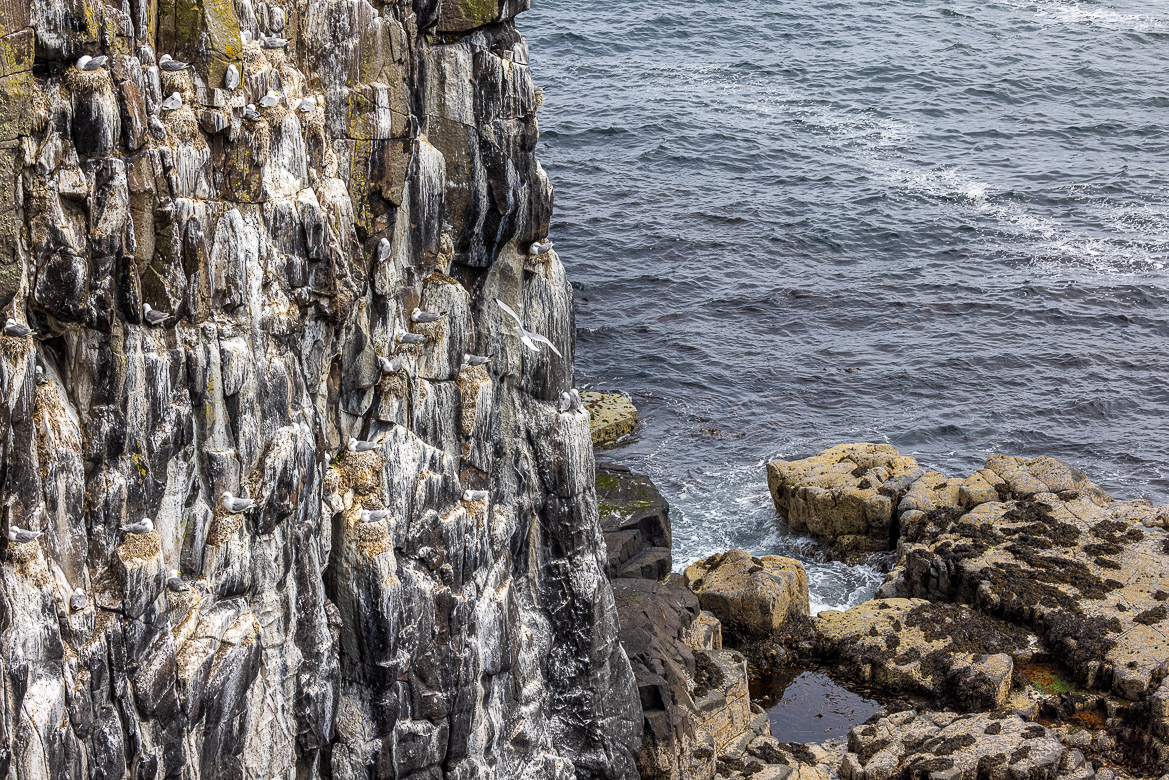
Kittiwakes are social birds going foraging together and breeding in large colonies. They estimate that there are around 6,000 pairs of Kittiwakes on the island. They are beautiful “gliders”, and it was much fun watching them “sailing” in the upwinds caused by the wind blowing against the tall cliffs.
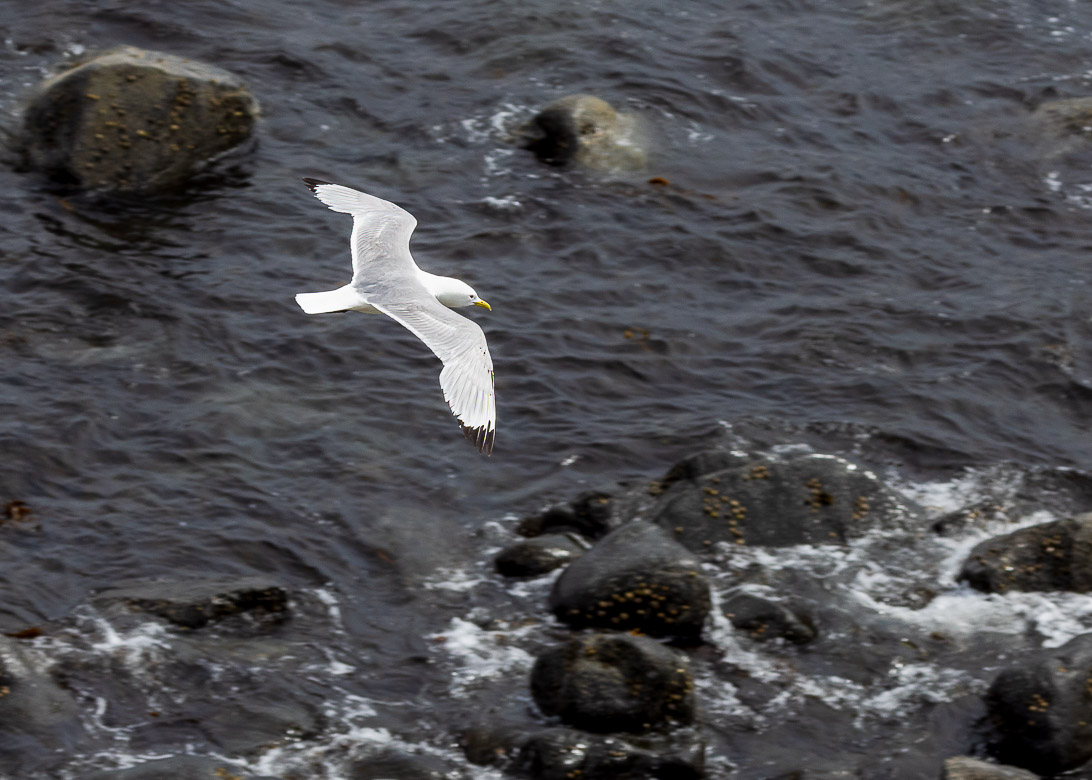
Shags
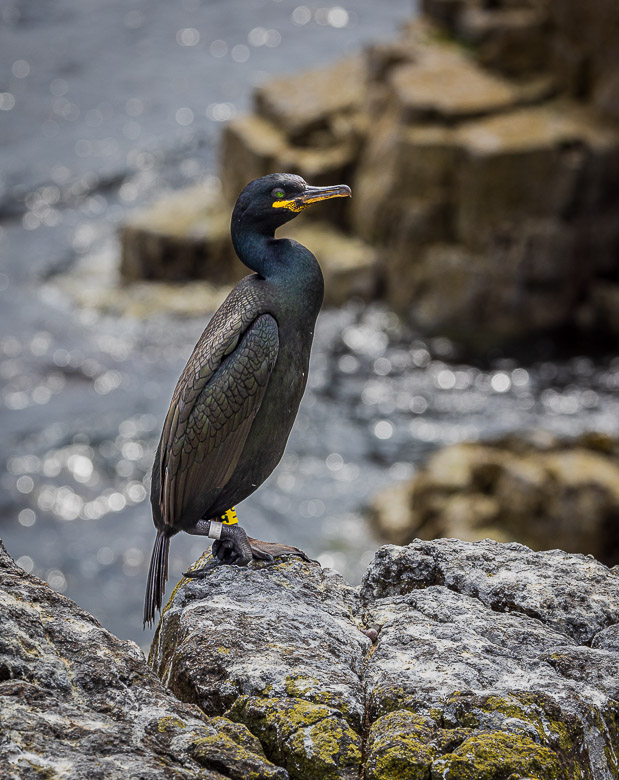
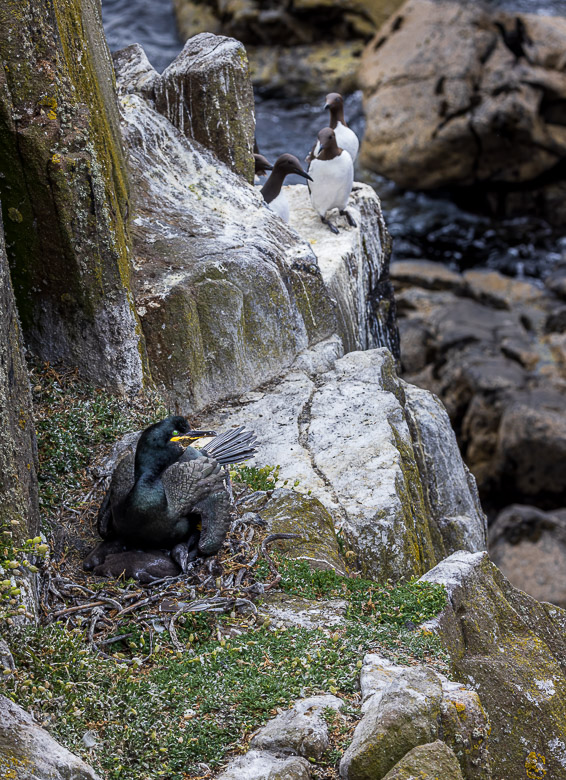
Shags are large, dark waterbirds, larger than any of the other species I saw on the island. They are part of the cormorant family but smaller than the cormorants I saw on the Falkland Islands and larger than the flightless cormorants we saw in Galapagos.
The largest colony of European Shags can be found on the Cies Islands, outside northwest Spain. Jennifer and I were there in 2005 just at the end of the breeding season. There are around 500 pairs on the Isle of May.
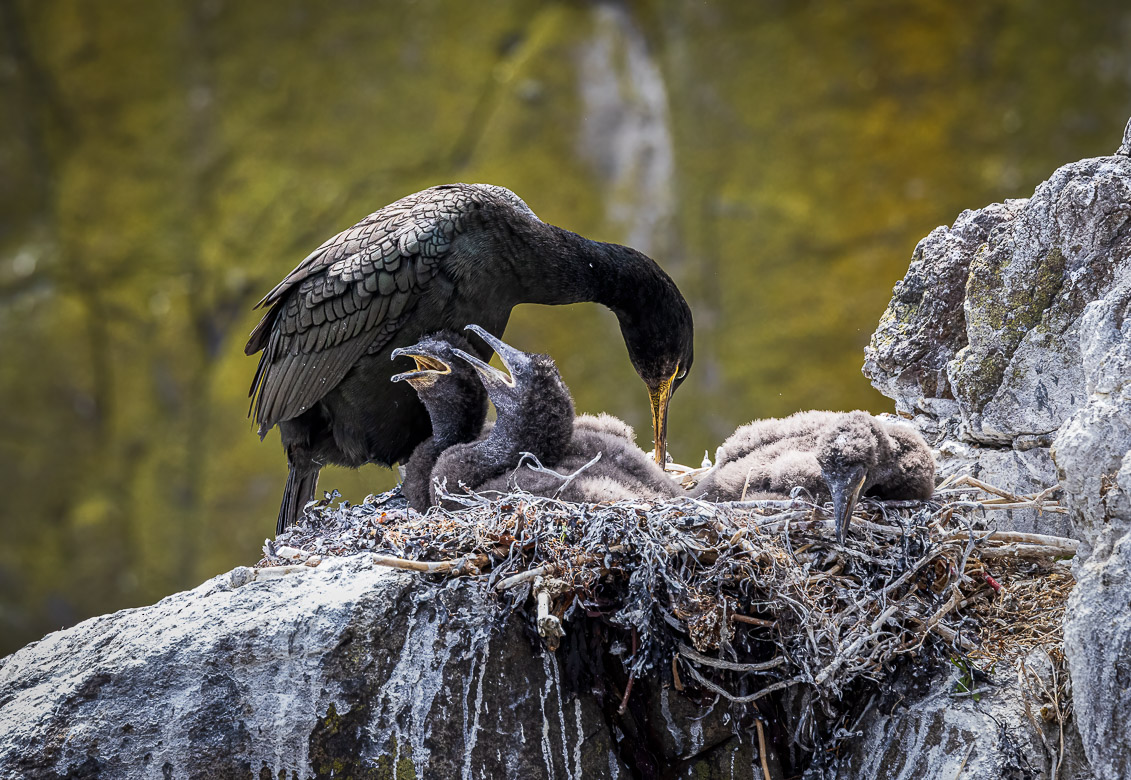
The nests look very untidy with lots of twigs cemented together by the bird’s own guano. You can see the nests in a couple of my photos. They normally lay three eggs, and when we visited in June, it seemed that all the nests had young chicken lying in them. The chicks are born without feathers, so they are entirely dependent on their parents for warmth and protection.
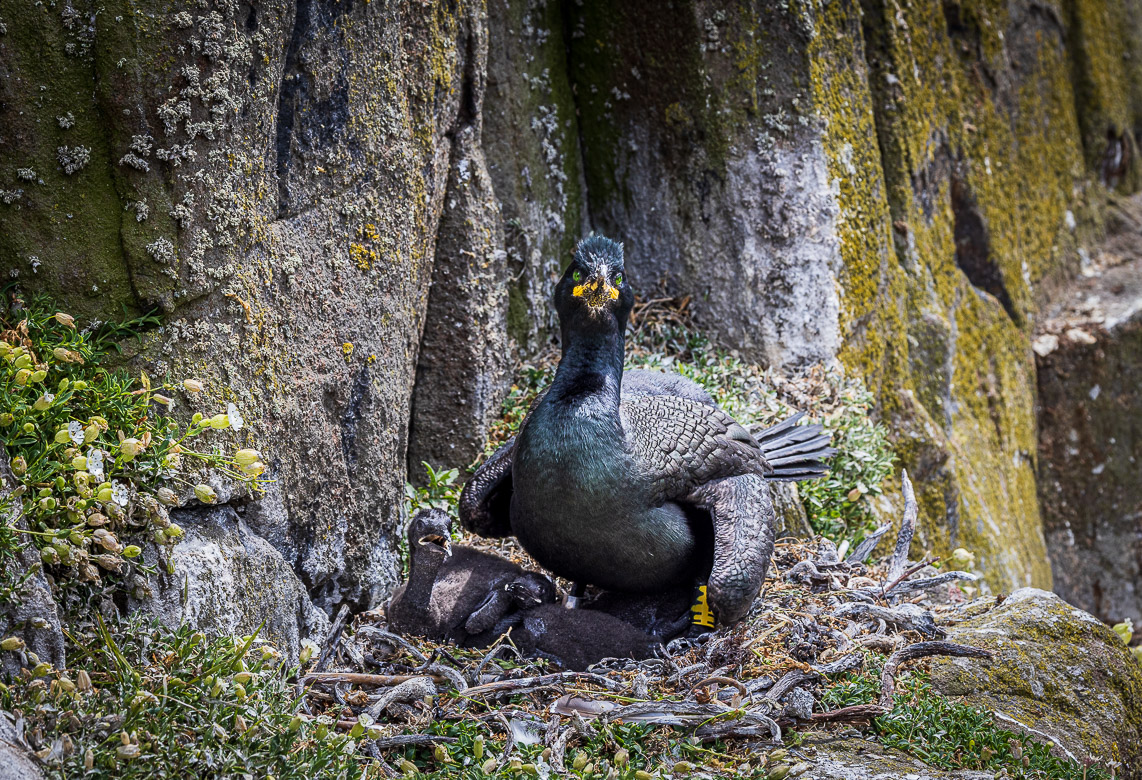
Puffins
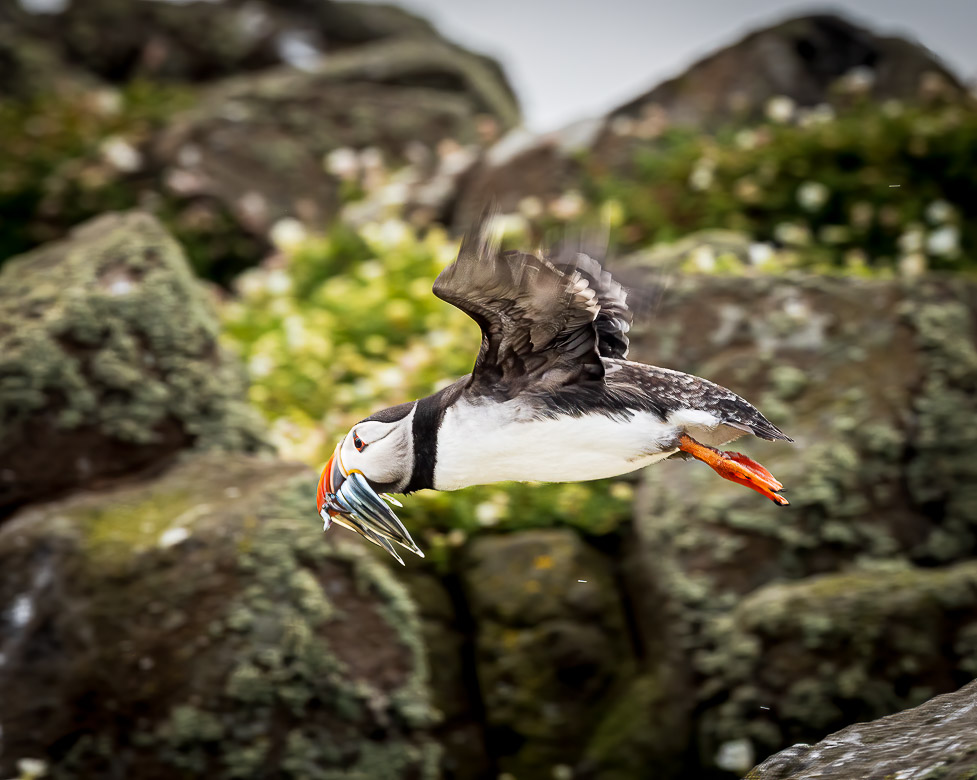
The species that was most fun to watch was the Atlantic Puffin. They are the “clowns of the sea”! They are very colourful, and their brightly coloured beaks are a special feature for the mating season. Their wings are adapted for swimming, and they use the wings to “paddle” underwater and their webbed feet as rudders. They can dive up to 100m below water and be down for a minute. They swim as fast as 10 miles per hour. But because of this agility the wings are short, and they move them fast, more then 400 times a minute. And they look very funny when the fly.
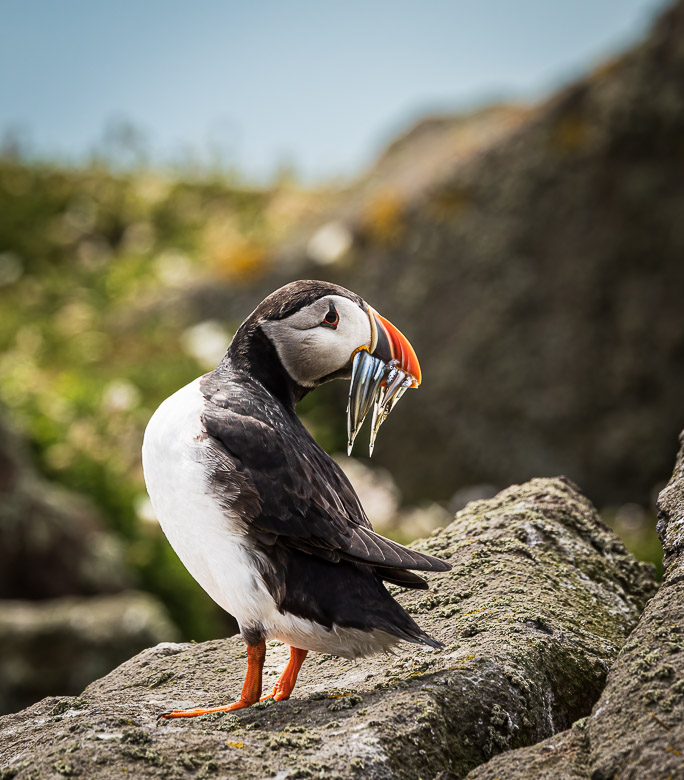
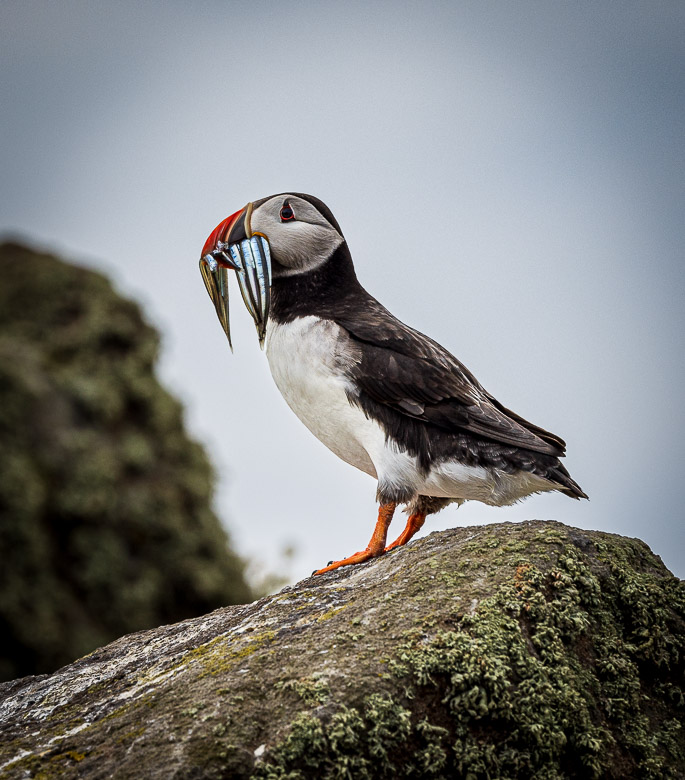
The Atlantic puffin is at home in Northern Europe with Iceland having more than 10 million puffins. About 50,000 pairs are on the Isle of Man. They feed on sand eels and other fish. Their beaks are specially designed to hold more than one fish at a time (see my photos) and they hold on to the fish for a long time before they decide to bring it home to their chick. But that gave me an opportunity to catch them on camera, while they proudly showed off their catch of the day!
Of all the bird watching and bird photography that day, the puffins was the most enjoyable to see and capture. And – as you can see from my photos – I enjoyed them with the sand eels in their mouths!
